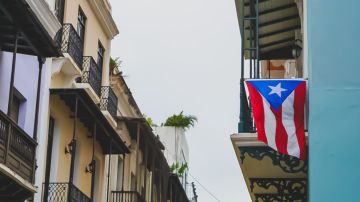Sustainability is the Key to Puerto Rico’s Recovery
After Hurricane Maria rocked the island of Puerto Rico in 2017, leaving 2,975 dead in its wake and displacing no fewer than 130,000 people, it became increasingly apparent to those remaining on the island that they couldn’t rely on the U

Photo: Unsplash/@tata186
After Hurricane Maria rocked the island of Puerto Rico in 2017, leaving 2,975 dead in its wake and displacing no fewer than 130,000 people, it became increasingly apparent to those remaining on the island that they couldn’t rely on the U.S. government to help them when they needed it the most. From textiles to gasoline and even 85% of its food supply, Puerto Rico’s economy relies heavily on imports from the U.S. and other countries. And then there’s the Jones Act which makes it so that only United States-owned and operated vessels can carry goods into Puerto Rico, in turn making the costs of said supplies all the more expensive. Combined, all these factors spelled disaster when the hurricane hit, forcing ports to close and tying everything up in red tape. In their time of need, the Puerto Rican people were left to go hungry and fend for themselves. The storm forced the island to face a harsh realization: become more self-sustainable or risk another tragedy.
Like in many other places, farming on Puerto Rico has been on the decline for decades. But recognizing the potential and importance of investing in the island, Efrén D. Robles founded Frutos del Guacabo in 2010. With a focus on gastronomy, this small farm has grown into a collective of local farmers that are creating an ecosystem that impacts the local economy by growing and promoting locally sourced foods.
“Since Maria, people were scared out of their comfort zone and realized how important it is to be more self-sustainable. Most of the farmers in the collective were not farmers before. A lot of professionals in the area used the knowledge from their past work experience and integrated it into farming” Efrén says.
The farm itself grows a variety of foods including bok choy, edible flowers and a number of fruits and vegetables. They look for seeds that are trending, “some work, some don’t but we have a hell of a time figuring it out.” he added.
What’s important to note about Frutos del Guacabo is that they don’t supply to a distributor, they instead work as a middle-man and deliver goods directly to restaurants and businesses. They’re currently providing locally-sourced food to close to 200 restaurants and hotels across the island.
One of these restaurants is Bluefin Scratch Kitchen, a Caribbean-Asian fusion restaurant that prides itself in creating unique dishes and cocktails (and which offered up what was quite easily the best meal I had while in Puerto Rico).
Like many after the hurricane, the owner/chef duo of Bluefin, Ardiesh Badillo and husband Jessy Soto, escaped to the Orlando metro area where they opened up a food truck. But they soon realized that they wanted to return to Puerto Rico and rebuild their lives. Ardiesh took the food truck idea and turned it into a brick and mortar which opened up in old San Juan just a few months ago. They now source all of their produce from Guacabo and all of their fish locally; 80% of their vendors are local, with the goal to become 100% locally sourced in the next year.
But it’s not just small businesses that have realized that sustainability is the key to Puerto Rico’s future. Some major players in the tourism industry have also adopted sustainability practices with an aim to support local businesses and drive an independent local economy. Take Gingambô, the signature restaurant at the San Juan Marriott Resort & Stellaris Casino; they get 100% of their microgreens from Frutos del Guacabo. They also source their honey locally from Caraballo Apiarios, their chocolate from Puerto Rican chocolatier Chocolate Cortes, and even their breads, juices and plantains from local producers. And there’s the AC Hotel which gets 20% of their food from local purveyors and makes their own jams using fruit from local fruit growers.
To discuss the issue of sustainability is to discuss Puerto Rico’s future. And with many calling for Puerto Rico to become more independent and capable of supporting its people in times of need, it’s promising to see that the community across all sectors is working to build an infrastructure with more long-term viability than what is currently in place.

















